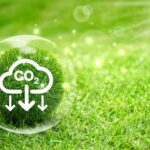The New York State Department of Environmental Conservation (DEC) and New York State Energy Research and Development Authority (NYSERDA) released draft guidance for state entities to inform the investments and benefits reporting on compliance with the Climate Leadership and Community Protection Act.
The Community Protection Act, also known as the Climate Act, requires that a minimum of 35% of the state’s clean energy investments benefit disadvantaged communities, with a goal of 40%.
The draft Disadvantaged Communities Investments and Benefits Reporting Guidance is a blueprint for reporting energy efficiency and clean energy programmatic investments by State entities in disadvantaged communities and will advance consistency and transparency in complying with the Climate Act’s equity provisions.
“This guidance is critical to helping NYSERDA and our partner agencies take the necessary steps to design and implement programs that demonstrate direct benefits to New York’s most underserved communities,” said NYSERDA President and CEO and Climate Action Council Co-Chair Doreen M. Harris, in a statement. “We welcome input from New Yorkers on this draft guidance so that, together, we can advance a clean energy future that maximizes accountability, advances climate justice, and stimulates economic development that allows all New York communities to prosper.”
Developed in collaboration with a number of New York State agencies and authorities, the draft guidance, when finalized, will provide the information state entities need to comply with the Climate Act’s equity mandate and account for energy efficiency and clean energy program investments in disadvantaged communities as defined and finalized by the Climate Justice Working Group (CJWG) in March 2023.
This guidance will help ensure that disadvantaged communities receive the minimum of the overall benefits of the state’s clean energy and energy efficiency programs, projects, or investments in the areas of housing, workforce development, pollution reduction, low-income energy assistance, renewable energy, transportation, and economic development.





